Different Types of Wiring Systems and Methods of Electrical Wiring
Methods of Wiring And Different Types of Wiring Systems
What is Electrical Wiring?
Electrical Wiring is a process of connecting cables and wires to the related devices such as fuse, switches, sockets, lights, fans etc to the main distribution board is a specific structure to the utility pole for continues power supply.
Methods of Electrical Wiring Systems w.r.t Taking Connection
Wiring (a process of connecting various accessories for distribution of electrical energy from supplier’s meter board to home appliances such as lamps, fans and other domestic appliances is known as Electrical Wiring) can be done using two methods which are
- Joint box system or Tee system
- Loop – in system
They are discussed as follows:
Joint Box or Tee or Jointing System
In this method of wiring, connections to appliances are made through joints. These joints are made in joint boxes by means of suitable connectors or joints cutouts. This method of wiring doesn’t consume too much cables size.
You might think because this method of wiring doesn’t require too much cable it is therefore cheaper. It is of course but the money you saved from buying cables will be used in buying joint boxes, thus equation is balanced. This method is suitable for temporary installations and it is cheap.
Loop-in or Looping System
This method of wiring is universally used in wiring. Lamps and other appliances are connected in parallel so that each of the appliances can be controlled individually. When a connection is required at a light or switch, the feed conductor is looped in by bringing it directly to the terminal and then carrying it forward again to the next point to be fed.
The switch and light feeds are carried round the circuit in a series of loops from one point to another until the last on the circuit is reached. The phase or line conductors are looped either in switchboard or box and neutrals are looped either in switchboard or from light or fan. Line or phase should never be looped from light or fan.
Advantages of Loop-In Method of Wiring
- It doesn’t require joint boxes and so money is saved
- In loop – in systems, no joint is concealed beneath floors or in roof spaces.
- Fault location is made easy as the points are made only at outlets so that they are accessible.
Disadvantages of Loop-In Method of Wiring
- Length of wire or cables required is more and voltage drop and copper losses are therefore more
- Looping – in switches and lamp holders is usually difficult.
Related Posts:
- Types of Diodes and Their Applications
- Different Types Of Relays, Their Construction, Operation & Applications
Different Types of Electrical Wiring Systems
The types of internal wiring usually used are
- Cleat wiring
- Wooden casing and capping wiring
- CTS or TRS or PVC sheath wiring
- Lead sheathed or metal sheathed wiring
- Conduit wiring
There are additional types of conduit wiring according to Pipes installation (Where steel and PVC pipes are used for wiring connection and installation).
- Surface or open Conduit type
- Recessed or concealed or underground type Conduit
Cleat Wiring
This system of wiring comprise of ordinary VIR or PVC insulated wires (occasionally, sheathed and weather proof cable) braided and compounded held on walls or ceilings by means of porcelain cleats, Plastic or wood.
Cleat wiring system is a temporary wiring system therefore it is not suitable for domestic premises. The use of cleat wiring system is over nowadays.
Advantages of Cleat Wiring:
- It is simple and cheap wiring system
- Most suitable for temporary use i.e. under construction building or army camping
- As the cables and wires of cleat wiring system is in open air, Therefore fault in cables can be seen and repair easily.
- Cleat wiring system installation is easy and simple.
- Customization can be easily done in this wiring system e.g. alteration and addition.
- Inspection is easy and simple.
Disadvantages of Cleat Wiring:
- Appearance is not so good.
- Cleat wiring can’t be use for permanent use because, Sag may be occur after sometime of the usage.
- In this wiring system, the cables and wiring is in open air, therefore, oil, Steam, humidity, smoke, rain, chemical and acidic effect may damage the cables and wires.
- it is not lasting wire system because of the weather effect , risk of fire and wear & tear.
- it can be only used on 250/440 Volts on low temperature.
- There is always a risk of fire and electric shock.
- it can’t be used in important and sensitive location and places.
- It is not lasting, reliable and sustainable wiring system.
Related Posts:
- Different Types of Sensors with Applications
- Types of Solar Panel and Which one is the best PV Panel?
Casing and Capping wiring
Casing and Capping wiring system was famous wiring system in the past but, it is considered obsolete this days because of Conduit and sheathed wiring system. The cables used in this kind of wiring were either VIR or PVC or any other approved insulated cables.
The cables were carried through the wooden casing enclosures. The casing is made up of a strip of wood with parallel grooves cut length wise so as to accommodate VIR cables. The grooves were made to separate opposite polarity. the capping (also made of wood) used to cover the wires and cables installed and fitted in the casing.
Advantages of Casing Capping Wiring:
- It is cheap wiring system as compared to sheathed and conduit wiring systems.
- It is strong and long-lasting wiring system.
- Customization can be easily done in this wiring system.
- If Phase and Neutral wire is installed in separate slots, then repairing is easy.
- Stay for long time in the field due to strong insulation of capping and casing..
- It stays safe from oil, Steam, smoke and rain.
- No risk of electric shock due to covered wires and cables in casing & capping.
Disadvantages Casing Capping Wiring:
- There is a high risk of fire in casing & capping wiring system.
- Not suitable in the acidic, alkalies and humidity conditions
- Costly repairing and need more material.
- Material can’t be found easily in the contemporary
- White ants may damage the casing & capping of wood.
Related Posts:
Batten Wiring (CTS or TRS)
Single core or double core or three core TRS cables with a circular oval shape cables are used in this kind of wiring. Mostly, single core cables are preferred. TRS cables are chemical proof, water proof, steam proof, but are slightly affected by lubricating oil. The TRS cables are run on well seasoned and straight teak wood batten with at least a thickness of 10mm.
The cables are held on the wooden batten by means of tinned brass link clips (buckle clip) already fixed on the batten with brass pins and spaced at an interval of 10cm for horizontal runs and 15cm for vertical runs.
Advantages of Batten Wiring
- Wiring installation is simple and easy
- cheap as compared to other electrical wiring systems
- Paraphrase is good and beautiful
- Repairing is easy
- strong and long-lasting
- Customization can be easily done in this wiring system.
- less chance of leakage current in batten wiring system
Disadvantages of Batten Wiring
- Can’t be install in the humidity, Chemical effects, open and outdoor areas.
- High risk of firs
- Not safe from external wear & tear and weather effects (because, the wires are openly visible to heat, dust, steam and smoke.
- Heavy wires can’t be used in batten wiring system.
- Only suitable below then 250V.
- Need more cables and wires.
Lead Sheathed Wiring
The type of wiring employs conductors that are insulated with VIR and covered with an outer sheath of lead aluminum alloy containing about 95% of lead. The metal sheath given protection to cables from mechanical damage, moisture and atmospheric corrosion.
The whole lead covering is made electrically continuous and is connected to earth at the point of entry to protect against electrolytic action due to leaking current and to provide safety in case the sheath becomes alive. The cables are run on wooden batten and fixed by means of link clips just as in TRS wiring.
Related Post:
Which Bulb Glows Brighter When Connected in Series and Parallel & Why?
Conduit Wiring
There are two additional types of conduit wiring according to pipe installation
- Surface Conduit Wiring
- Concealed Conduit Wiring
Surface Conduit Wiring
If conduits installed on roof or wall, It is known as surface conduit wiring. in this wiring method, they make holes on the surface of wall on equal distances and conduit is installed then with the help of rawal plugs.
Concealed Conduit wiring
If the conduits is hidden inside the wall slots with the help of plastering, it is called concealed conduit wiring. In other words, the electrical wiring system inside wall, roof or floor with the help of plastic or metallic piping is called concealed conduit wiring. obliviously, It is the most popular, beautiful, stronger and common electrical wiring system nowadays.
In conduit wiring, steel tubes known as conduits are installed on the surface of walls by means of pipe hooks (surface conduit wiring) or buried in walls under plaster and VIR or PVC cables are afterwards drawn by means of a GI wire of size if about 18SWG.
In Conduit wiring system, The conduits should be electrically continuous and connected to earth at some suitable points in case of steel conduit. Conduit wiring is a professional way of wiring a building. Mostly PVC conduits are used in domestic wiring.
The conduit protects the cables from being damaged by rodents (when rodents bites the cables it will cause short circuit) that is why circuit breakers are in place though but hey! Prevention is better than cure. Lead conduits are used in factories or when the building is prone to fire accident. Trunking is more of like surface conduit wiring. It’s gaining popularity too.
It is done by screwing a PVC trunking pipe to a wall then passing the cables through the pipe. The cables in conduit should not be too tight. Space factor have to be put into consideration.
Types of Conduit
Following conduits are used in the conduit wiring systems (both concealed and surface conduit wiring) which are shown in the above image.
- Metallic Conduit
- Non-metallic conduit
Metallic Conduit:
Metallic conduits are made of steel which are very strong but costly as well.
There are two types of metallic conduits.
- Class A Conduit: Low gauge conduit (Thin layer steel sheet conduit)
- Class B Conduit: High gauge conduit (Thick sheet of steel conduit)
Non-metallic Conduit:
A solid PVC conduit is used as non-metallic conduit now a days, which is flexible and easy to bend.
Size of Conduit:
The common conduit pipes are available in different sizes genially, 13, 16.2, 18.75, 20, 25, 37, 50, and 63 mm (diameter) or 1/2, 5/8, 3/4, 1, 1.25, 1.5, and 2 inch in diameter.
Advantage of Conduit Wiring Systems
- It is the safest wiring system (Concealed conduit wring)
- Appearance is very beautiful (in case of concealed conduit wiring)
- No risk of mechanical wear & tear and fire in case of metallic pipes.
- Customization can be easily done according to the future needs.
- Repairing and maintenance is easy.
- There is no risk of damage the cables insulation.
- it is safe from corrosion (in case of PVC conduit) and risk of fire.
- It can be used even in humidity , chemical effect and smoky areas.
- No risk of electric shock (In case of proper earthing and grounding of metallic pipes).
- It is reliable and popular wiring system.
- sustainable and long-lasting wiring system.
Disadvantages of Conduit Wiring Systems
- It is expensive wiring system (Due to PVC and Metallic pipes, Additional earthing for metallic pipes Tee(s) and elbows etc.
- Very hard to find the defects in the wiring.
- installation is not easy and simple.
- Risk of electric shock (In case of metallic pipes without proper earthing & grounding system)
- Very complicated to manage additional connection in the future.
Comparison between Different Wiring Systems
Below is the table which shows the comparison between all the above mentioned wiring systems.
We will discuss the step by step method of different wiring systems in coming posts.. So stay tune and don’t forget to subscribe to our blog. Thanks
Related Post:
- UPS / Inverter Wiring Diagrams & Connection
- Solar Panel Wiring & Installation Diagrams
- Batteries Wiring Connections and Diagrams
- Single Phase & Three Phase Wiring Diagrams (1-Phase & 3-Phase Wiring)
- Three Phase Motor Power & Control Wiring Diagrams
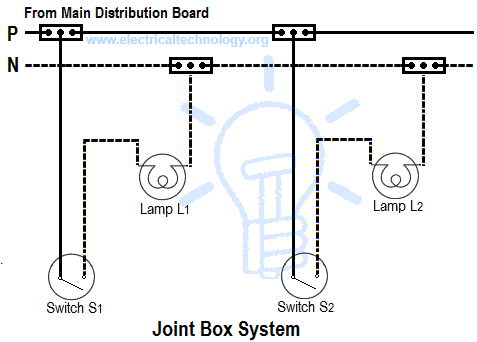
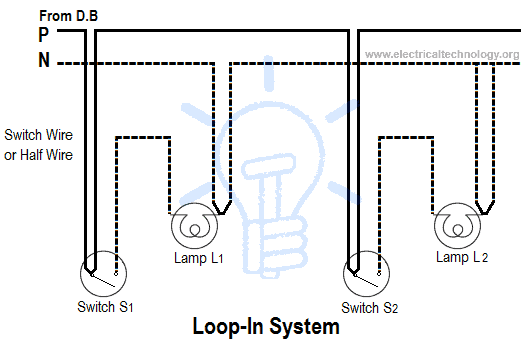
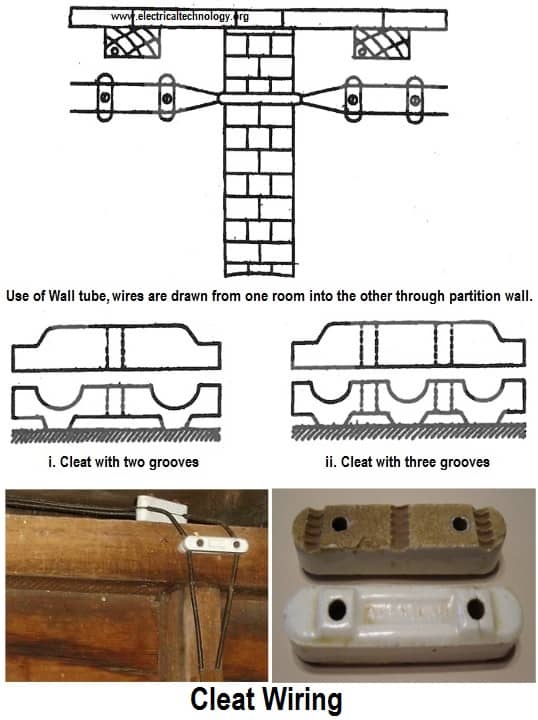

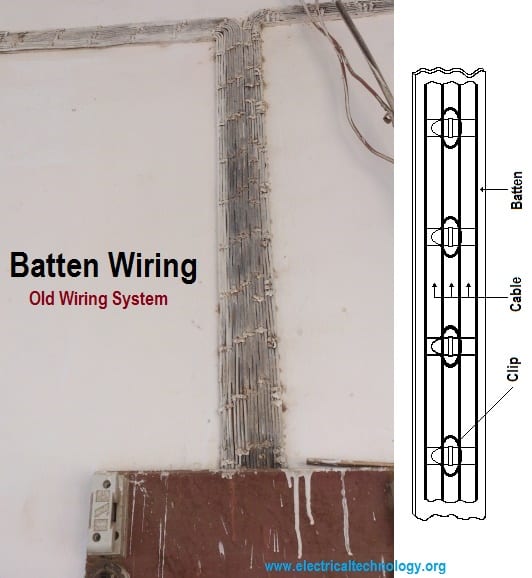
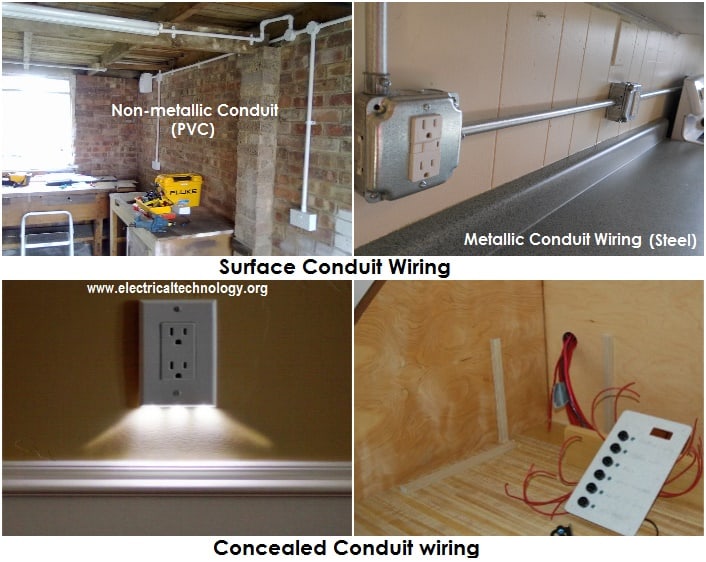
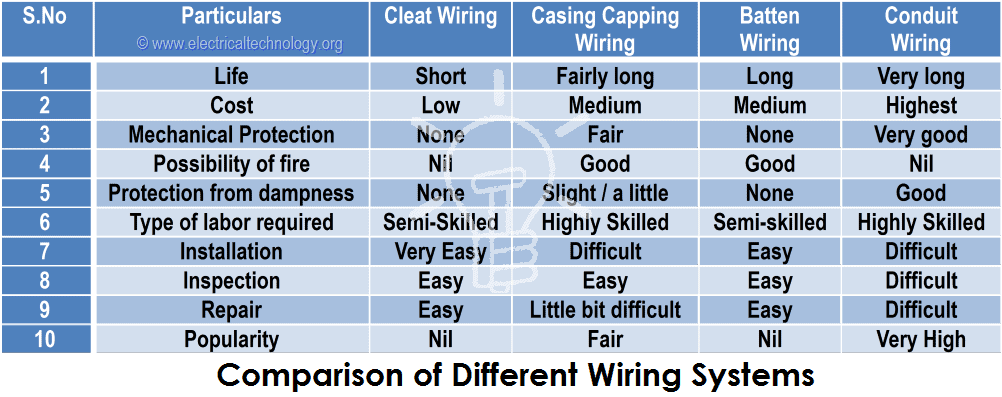






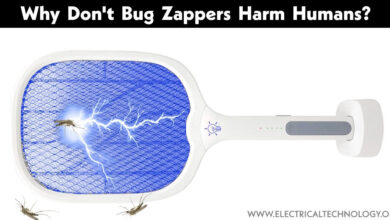
Thanks for ur post coz it helps us to knw more…..let’s join hands…
Thank You for such a comprehensive and fabulous website.
Congratulations.. and do keep the good work going!
Thank you.
. its fantastic it is really helpful
This is very useful especially electrical engineering student.
This is very useful to me but put some images to all the topics to understand easily.
Please you are doing a nice work online. you well articulated write up is easy to understand
Great work! Keep it up
thanks alot its extremly helpful.. goodwork
This site is very helpful for ITI Electrician trade
This website is very helpful and simplistic
Good work ADMIN, still you can make this website interesting by adding “MAKING OF SMALL PROJECT” and add 1 Coulomb naming “DO YOU KNOW” and add #FACT & MCQ
Infant you really did a great work,am pround of you, please keep it proceding
I appreciate the offer
thank you for such a fabulous work ………..
Thanks you! I am electrotecnic and this is wonderful!!
This has bn of great help.thanx for that piece.
Wish to have also the different wiring sytems in different places such as industries , petrol stations.etc
Nice content and explanation
Very good
Hello
Please am new here
And i really what too know more about here
Thanks for the elaborated notes… but include some images or videos so to get the concept right
Very useful. Thanks
Very good happy to have web like this
I learn alot
I really like it, so helpful,,, take a 5***** rating
Very clear topic explanation. Thanks for posting!
big up””””continue with the same spirit
its definetly good…love it here!..interesting…!really interesting! i really learnt a lot.thanks to the admin of this blog site…
Its very good discription.
It’s So Good En Helpful Thanks A lot For Great Work Done
very educative and interesting.
Thanks
very interesting
my upplauds for such fantastic work
THANK YOU VERY MUCH!!!
Wow!its so amaizing ……keep it up admin..
Great this web has made something on my brain about the grounding… thanks for this.
Thank you
Thanks alot
Thank you for CLEAT WIRING Advantages And Disadvantages.
a big thanks for posting these, it was such a big help to.
Sorry my dear friends how I can get this notice in pdf form or application
Great post. Thank you for sharing.